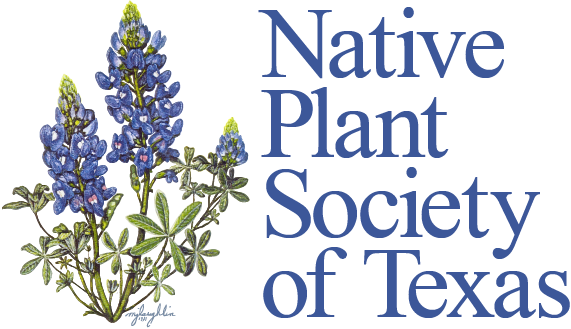By Delmar Cain
The middle of the fall season might be a good time to consider a few plants that have weathered this extended drought with a degree of class. My criterion for “weathering” is that the plant has progressed through a normal growth sequence in a natural location with only the rain for moisture. These are plants that might find a place in your yard.
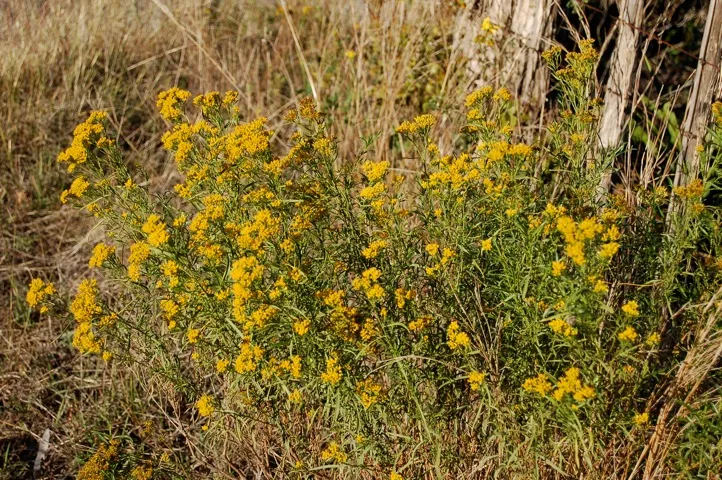
For almost a year Patty Leslie Pasztor has been conducting a weekly survey along a set route at the Cibolo Nature Center in Boerne. The primary purpose of the survey is to record the number and types of butterflies observed along the route, although Patty also records plants in bloom and birds seen or heard. The walk is open to the public, very informative and good exercise. I am a regular attendee.
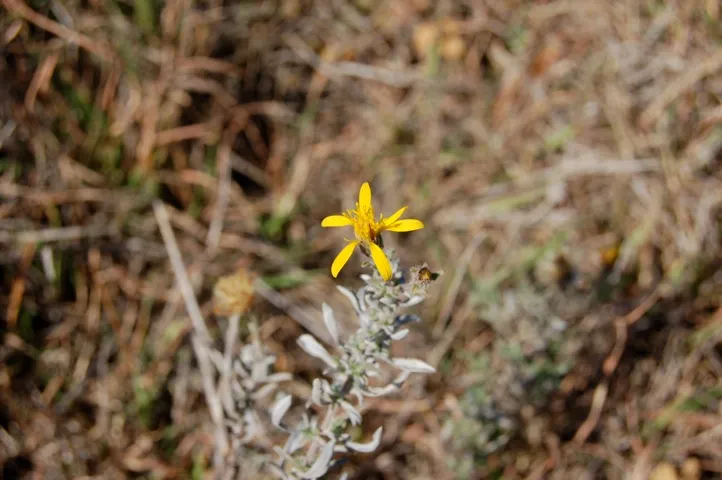
Of particular interest, at least for the purpose of this column, is the prairie, an area between the marsh, which is just west of the entrance road on the east boundary of the park, and Cibolo Creek, which is close to the west boundary of the park. The prairie gets no water other than the rain that falls, which means that over the last year it has received no more than 14 inches.
Three species of plants in the prairie have been impressive in their ability to take the heat and the drought. The first is familiar and occupies a spot in most yards—our native Texas lantana or calico bush (Lantana urticoides). It lived up to its tough reputation and bloomed from spring until fall.
Two other plants are also worthy of mention and are not so familiar. Gray golden-aster (Heterotheca canescens) covers several areas on the prairie where the switch grass and the Lindheimer muhly has not taken hold. It is a small bushy perennial plant that grows 4-18 inches tall and forms colonies in the dry, calcareous soils of the Hill Country. It also is versatile since it grows from Kleberg County is South Texas to Oklahoma and Kansas. The Wildflower Center in Austin indicates that this plant blooms from July to September. But our walks at the CNC revealed yellow flowers from June with a few plants still producing the last blooms of the year in November.
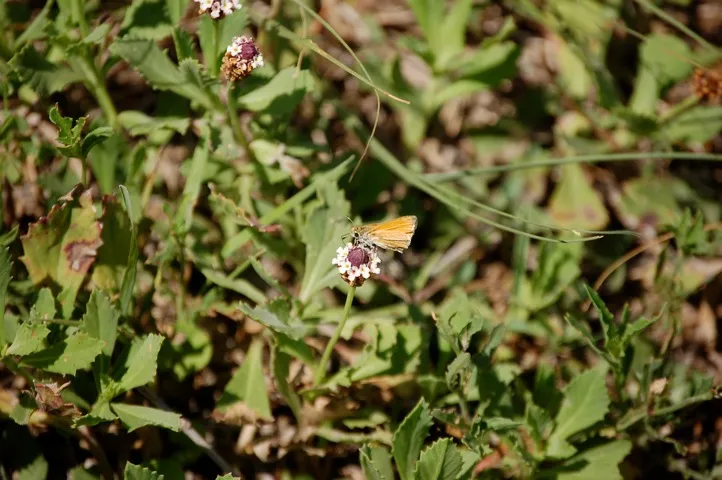
Another plant with staying power during a drought is Texas frogfruit or just frogfruit (Phyla nodiflora). This plant is in the Verbena Family and grows somewhat like our common Dakota verbena in that it grows with 3-5 inch high prostrate stems. The stems, which can grow up to three feet in length, root at the nodes. The flowers rise on 4-inch stems and are normally white.
According to the Wildflower Center both of these perennial plants can be used as a ground cover, although frogfruit is especially versatile since it is also semi-evergreen. Frogfruit also tolerates flooding but will not tolerate mowing. Now frogfruit is my kind of plant—drought or flood and leave your lawn mower in storage.
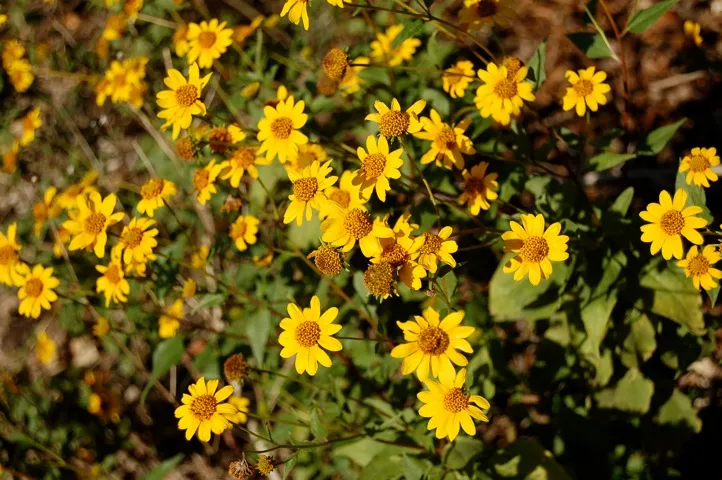
To go to my home from Boerne I travel FM 474 and Kreutzberg Road. Along that route two other plants have caught my eye this fall, because they are blooming in spite of puny rainfall. The first one is a perennial that grows in sun or part shade, blooming with showy, yellow 1 1/2 inch flowers in October and November. Although the Wildflower Center indicates that the toothleaf goldeneye or goldeneye (Viguiera dentate) can grow to six feet tall in the shade, I have seen it generally in the three feet range in more sunny locations. But once again the key is that it is very drought tolerant.
The last plant that I can recommend for its toughness is gumhead or tatalencho (Gymnosperma glutinosum). Again it is a perennial that blooms from summer until November with small flowers bunched in 2-4 inch head. The plant itself can grow waist-high and is semi-woody in the lower half. It grows in the dry caliche soils from the Hill Country west to Arizona.
If you can find a place for these plants in an area where mowing is not needed, you will find that when established no water is required. As an additional benefit, the first four are either good nectar plants or host plants for butterflies. Keep an eye on them for beauty and for a butterfly sideshow from time to time.
